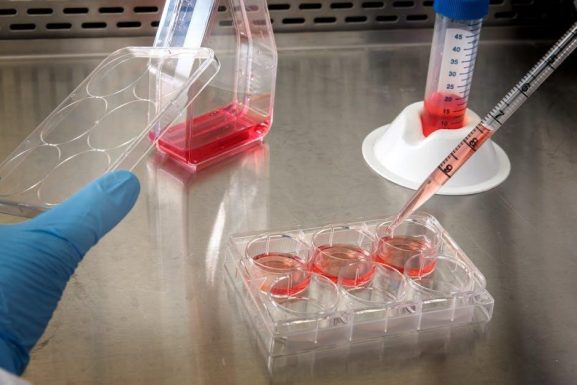Unit 1 of AP Biology introduces foundational concepts, including ecology, scientific methods, and key biological principles. It sets the stage for understanding life sciences and prepares students for the AP exam. The unit emphasizes critical thinking, lab practices, and essential biological processes. Students can utilize practice tests and study guides to master the material effectively.
Overview of AP Biology Unit 1
AP Biology Unit 1 focuses on foundational concepts, including ecology, evolution, and scientific practices. It introduces students to ecosystems, energy flow, and biogeochemical cycles, as well as lab safety and experimental design. The unit emphasizes understanding biological processes and applying the scientific method. Practice exams and study guides are essential tools for mastering the material, with multiple-choice and free-response questions testing knowledge of key concepts. Students explore topics like population dynamics, genetic variation, and natural selection, preparing them for the AP exam. The unit also covers biomolecules, cell structure, and photosynthesis, providing a comprehensive foundation for advanced biology studies. Effective study techniques and time management are crucial for success in this unit.
Importance of Unit 1 in AP Biology
Unit 1 is foundational to AP Biology, establishing core concepts that are built upon in subsequent units. It introduces ecology, evolution, and scientific practices, which are central to understanding biological systems. Mastery of Unit 1 is essential for success in the AP exam, as it sets the stage for advanced topics like cellular processes and genetics. The unit’s focus on ecosystems, energy flow, and biogeochemical cycles provides a framework for analyzing environmental interactions. Additionally, the emphasis on lab practices and experimental design prepares students for scientific inquiry and data analysis. By understanding these principles, students develop critical thinking skills necessary for higher-level biology. Regular practice with test materials and study guides helps reinforce these concepts and ensures a strong foundation for the entire course.
Key Concepts Covered in Unit 1
Unit 1 of AP Biology covers foundational topics such as ecology, evolution, and scientific practices. Key concepts include understanding ecosystems, energy flow, and nutrient cycles, as well as biogeochemical cycles like carbon, nitrogen, and water cycles. Students explore population dynamics, community structure, and ecological principles that govern interactions between organisms and their environments. The unit also introduces scientific inquiry methods, experimental design, and data analysis, which are critical for conducting biological research. Additionally, fundamental biological concepts like biomolecules, cell structure, and basic genetics are introduced. These topics provide a solid foundation for understanding life sciences and prepare students for advanced units in the course. Mastery of these concepts is essential for success on the AP Biology exam.

Ecology and Evolution
Ecology and evolution form the cornerstone of AP Biology Unit 1, exploring interactions between organisms and their environments, as well as evolutionary processes shaping biodiversity over time.
Ecology is the scientific study of interactions between organisms and their environment, focusing on how living and non-living components shape ecosystems. It examines relationships at individual, population, and community levels, as well as the flow of energy and nutrients. Key concepts include biotic (living) and abiotic (non-living) factors, habitats, and ecological niches. Understanding these principles is vital for addressing environmental challenges and conservation efforts. Ecological studies often emphasize the balance within ecosystems and how human activities influence biodiversity. This foundational knowledge is crucial for AP Biology Unit 1, as it sets the stage for exploring complex interactions in nature and their evolutionary implications.
Understanding Ecosystems
An ecosystem is a community of living organisms (biotic factors) interacting with their non-living environment (abiotic factors). Ecosystems vary in size, from small ponds to vast forests, and function through energy flow and nutrient cycling. Producers, such as plants, form the base of the food web, converting sunlight into energy via photosynthesis. Consumers, including herbivores and carnivores, rely on producers for energy, while decomposers recycle nutrients back into the environment. Ecosystems are dynamic, influenced by factors like climate, human activity, and species interactions. Understanding ecosystems is critical for AP Biology, as they illustrate how life sustains itself and adapts to environmental changes. This knowledge is essential for analyzing ecological balance and human impacts on natural systems.
Energy Flow and Nutrient Cycles
Energy flow through ecosystems is unidirectional, moving from producers to consumers, with only 10% of energy transferred between trophic levels. This hierarchy is represented by food chains or webs. Producers like plants capture solar energy via photosynthesis, forming the base of the energy pyramid. Consumers, such as herbivores and carnivores, rely on this energy, while decomposers recycle organic matter. Nutrient cycles, like carbon, nitrogen, and phosphorus cycles, ensure elements are reused within ecosystems. These cycles sustain life by returning nutrients to producers, maintaining ecological balance. Understanding energy flow and nutrient cycling is vital for analyzing ecosystem efficiency and the impact of human activities on resource availability. This knowledge is fundamental for AP Biology Unit 1, highlighting how ecosystems function and sustain life.
Biogeochemical Cycles
Biogeochemical cycles refer to the pathways by which essential nutrients, such as carbon, nitrogen, phosphorus, and water, circulate through ecosystems; These cycles involve the movement of nutrients between biotic and abiotic components, ensuring their availability for living organisms. The carbon cycle includes processes like photosynthesis, respiration, and decomposition, while the nitrogen cycle involves nitrogen fixation, nitrification, and denitrification. The phosphorus cycle operates primarily through rock dissolution and decomposition. Water cycles through evaporation, precipitation, and groundwater flow. These cycles are critical for maintaining ecological balance and supporting life. Understanding biogeochemical cycles is essential for AP Biology Unit 1, as they highlight the interconnectedness of Earth’s systems and the recycling of matter. Human activities significantly impact these cycles, affecting global climate and biodiversity.

Scientific Method and Laboratory Practices
The scientific method involves systematic observation, hypothesis formulation, experimentation, and conclusion drawing to validate biological theories. Laboratory practices include proper techniques, safety protocols, and accurate data collection, essential for reliable AP Biology experiments and analyses.
Scientific Inquiry and the Scientific Method
Scientific inquiry is a systematic process used to explore and explain natural phenomena. It begins with observations, leading to questions and hypotheses. The scientific method, a structured approach, involves making predictions, conducting experiments, and analyzing data to test hypotheses. AP Biology Unit 1 emphasizes understanding this process, as it underpins all scientific investigation. Students learn to design experiments, collect and interpret data, and draw conclusions. This skill is crucial for success on the AP exam, particularly in free-response questions. Mastery of the scientific method enhances critical thinking, problem-solving, and the ability to evaluate evidence. Regular practice with sample questions and lab simulations helps reinforce these concepts effectively.
Experimental Design and Data Analysis
Experimental design is crucial in AP Biology Unit 1, focusing on creating controlled studies to test hypotheses. It involves identifying variables (independent, dependent, controlled) and establishing cause-and-effect relationships. A well-designed experiment ensures validity and reliability, minimizing confounding factors. Students learn to distinguish between control groups and experimental groups, as well as the importance of replication and randomization. Data analysis involves interpreting results, often through statistical methods like t-tests or chi-square tests, to determine significance. Graphical representations, such as bar graphs or scatter plots, help visualize trends and patterns. Understanding how to design experiments and analyze data is essential for answering free-response questions on the AP exam and applying scientific principles to real-world scenarios.
Lab Safety and Best Practices
Lab safety is a fundamental aspect of AP Biology Unit 1, emphasizing responsible conduct in laboratory settings. Students learn to identify hazards, such as chemicals, sharp objects, and biological materials, and take precautions to mitigate risks. Proper use of personal protective equipment (PPE), like goggles and gloves, is stressed. Safe handling and storage of equipment, along with correct disposal of waste, are essential practices. Emergency procedures, such as using fire extinguishers or responding to spills, are also covered. Adherence to lab rules and following instructor guidelines ensures a secure environment. Understanding lab safety fosters a culture of responsibility and prepares students for hands-on activities, aligning with the practical skills assessed on the AP Biology exam.

Key Biological Concepts

Key biological concepts in Unit 1 include biomolecules, cell structure, photosynthesis, cellular respiration, and genetics, providing a foundational understanding for advanced topics.
Biomolecules and Their Functions
Biomolecules, such as carbohydrates, lipids, proteins, and nucleic acids, are essential for life. Carbohydrates store energy, with glucose being a key energy source. Lipids, including fats and phospholipids, are vital for energy storage and cellular membranes. Proteins perform a wide range of functions, from enzyme activity to structural roles. Nucleic acids, like DNA and RNA, store and transmit genetic information. Understanding these biomolecules is critical for grasping cellular processes and metabolic pathways. They interact to maintain homeostasis and enable life’s complexity. Mastery of biomolecule structure and function is foundational for AP Biology and appears frequently on Unit 1 assessments.
Cell Structure and Organization
Cell structure and organization are fundamental to understanding life at the cellular level. The plasma membrane acts as the cell’s boundary, regulating the movement of materials. Inside, the cytoplasm contains organelles like mitochondria, which produce energy, and ribosomes, where protein synthesis occurs. The nucleus stores genetic information, directing cellular activities. Cells also contain structures like the endoplasmic reticulum and Golgi apparatus, essential for protein transport and modification. Cells organize into tissues, forming organs and systems, enabling complex life functions. This organization is crucial for maintaining homeostasis and facilitating specialized functions. Mastery of cell structure and organization is vital for AP Biology, as it underpins many biological processes and is a key focus of Unit 1 assessments.
Photosynthesis and Cellular Respiration
Photosynthesis and cellular respiration are vital processes in biology, forming the foundation of energy exchange in ecosystems. Photosynthesis occurs in plants, algae, and some bacteria, converting light energy into chemical energy through the equation: 6CO₂ + 6H₂O + light → C₆H₁₂O₆ + 6O₂. It involves the light-dependent reactions (thylakoid membranes) and the Calvin Cycle (stroma). Cellular respiration is the breakdown of glucose to produce ATP, occurring in three stages: glycolysis, the Krebs Cycle, and the electron transport chain. These processes are interdependent, as photosynthesis produces oxygen used in respiration, and respiration produces carbon dioxide used in photosynthesis. Understanding these cycles is critical for AP Biology Unit 1, as they highlight energy transformations and ecosystem balance.
Genetics and Heredity
Genetics and heredity are fundamental concepts in AP Biology Unit 1, focusing on the transmission of traits from one generation to the next. Mendelian genetics introduces the laws of segregation and independent assortment, explaining how genes separate during gamete formation. The structure and function of DNA and RNA are also explored, emphasizing their roles in storing and expressing genetic information. Gene expression involves transcription and translation, where DNA is transcribed into mRNA and then translated into proteins. Modern techniques like CRISPR-Cas9 highlight the manipulation of genes for specific traits. Understanding these principles is essential for analyzing inheritance patterns and the diversity of life, making genetics a cornerstone of biological studies.

Practice Test and Study Strategies
Effective study strategies include active recall and spaced repetition to enhance retention and understanding of biological concepts. Practice tests help identify weak areas for focused review.
Preparing for the Unit 1 Test
To prepare effectively for the AP Biology Unit 1 test, focus on understanding the test format and content. Start by reviewing the key concepts covered in the unit, such as biomolecules, cell structure, and ecosystems. Utilize the AP Biology Unit 1 Test PDF to familiarize yourself with the types of questions, including multiple-choice and free-response formats. Practice with past exams to identify weak areas and allocate study time accordingly. Make a study schedule to systematically cover all topics, ensuring thorough understanding of scientific processes and biological principles. Regularly review notes and use flashcards to reinforce memory. Additionally, seek guidance from teachers or study groups to clarify doubts and refine your strategies for the exam.
Effective Study Techniques for AP Biology
Mastering AP Biology requires engaging study techniques that promote deep understanding. Active learning methods, such as self-quizzing and summarizing notes, enhance retention. Use the AP Biology Unit 1 Test PDF to practice with realistic questions and identify knowledge gaps. Focus on elaboration by explaining complex concepts in simple terms. Create concept maps to visualize relationships between topics like ecosystems, biomolecules, and cellular processes. Prioritize spaced repetition to review material over time, preventing cramming. Additionally, teach the material to others or pretend to teach it aloud to reinforce learning. By combining these strategies, you can build a strong foundation for success in Unit 1 and beyond.
Common Mistakes to Avoid on the Test
When preparing for the AP Biology Unit 1 test, it’s crucial to avoid common pitfalls that can negatively impact your score; One major mistake is poor time management, where students spend too long on a single question, leaving insufficient time for others. Another error is misreading or misunderstanding question stems, leading to incorrect answers. Additionally, many students struggle with interpreting graphs, diagrams, or experimental data, which are frequently included in free-response questions. Overreliance on memorization without conceptual understanding can also hinder performance, as AP Biology emphasizes application of knowledge. To avoid these mistakes, practice under timed conditions, focus on comprehension, and ensure a deep understanding of key concepts rather than rote memorization. Regularly reviewing the AP Biology Unit 1 Test PDF can help familiarize yourself with question formats and reduce test-day anxiety.
Time Management During the Exam
Effective time management is critical for success on the AP Biology Unit 1 exam. Allocate your time wisely, ensuring you complete all sections within the allotted 90 minutes. For the multiple-choice section, spend about 1-2 minutes per question, leaving time to revisit challenging ones. For free-response questions (FRQs), allocate 15-20 minutes per question, as they are worth more points. Practice pacing yourself by taking timed practice tests using the AP Biology Unit 1 Test PDF. Avoid spending too long on a single question, as this can jeopardize your ability to answer others. Use any remaining time to review your answers, ensuring clarity and completeness. Prioritize questions you’re confident about first to secure points early. Stay calm and adhere to your time plan to maximize your performance.

Resources and References
The official AP Biology Unit 1 Test PDF is a valuable resource for exam preparation. Supplement with recommended textbooks, online platforms, and practice exams aligned with the course framework.
Recommended Textbooks and Online Resources
For mastering AP Biology Unit 1, several textbooks and online resources are highly recommended. Campbell’s Biology and AP Biology by Rebecca M. Gyimesi are excellent choices for in-depth explanations. Online platforms like Khan Academy, Coursera, and the College Board’s official website offer free study materials and practice questions. Additionally, websites such as AP Biology forums and educational YouTube channels provide interactive learning opportunities. These resources include video tutorials, detailed study guides, and practice exams that align with the unit’s content. The Official Study Guide by the College Board is also a must-have for understanding the test format and improving scores. Utilizing these tools ensures a comprehensive understanding of the material and effective preparation for the exam.
Practice Exams and Review Materials
To effectively prepare for the AP Biology Unit 1 test, utilizing practice exams and review materials is essential. The College Board offers official practice exams that closely mirror the actual test format, helping students familiarize themselves with the timing and question types. Third-party resources like Magoosh and Kaplan provide additional practice questions and detailed explanations. Online communities, such as Reddit’s r/APBiology, often share PDFs of past exams and study guides. Flashcards and concept summaries from platforms like Quizlet can reinforce key terms and concepts. Regularly practicing with these materials ensures a thorough understanding of the content and improves test-taking strategies, ultimately boosting confidence and performance on exam day.
Utilizing Study Guides and Flashcards
Study guides and flashcards are indispensable tools for mastering the material covered in the AP Biology Unit 1 test. Study guides provide concise summaries of key concepts, such as biomolecules, cell structures, and ecological principles, allowing for quick and focused review. Flashcards are particularly effective for memorizing terminology, biological processes, and essential equations. Websites like Quizlet offer pre-made flashcard decks for Unit 1 topics, while PDF guides available online can be printed or annotated for better retention. By incorporating these resources into your study routine, you can reinforce your understanding of complex topics and ensure you’re well-prepared for the exam.
Joining Study Groups and Forums
Joining study groups and forums can significantly enhance your preparation for the AP Biology Unit 1 test. Collaborative learning allows you to discuss complex topics, clarify doubts, and gain new insights from peers. Online forums like Reddit’s r/APBiology or specialized Facebook groups provide platforms to ask questions, share resources, and learn from others’ experiences. Study groups, whether in-person or virtual, foster accountability and motivation. Additionally, many online communities offer access to shared study materials, including PDF guides and practice tests; Active participation in these groups can help you stay updated on the latest study strategies and tips, ensuring you’re well-equipped for the exam.

Understanding Test Format and Content
The AP Biology Unit 1 test includes multiple-choice questions and free-response sections. The test assesses knowledge of ecology, evolutionary biology, and scientific practices, with a focus on critical thinking and application of concepts. Familiarizing yourself with the format and content through practice exams, such as those found in PDF guides, helps build confidence and improves time management during the actual test.
Multiple Choice Questions and Strategies
The AP Biology Unit 1 test includes multiple-choice questions that assess your understanding of key concepts, such as ecology, evolution, and scientific practices. These questions often require critical thinking and the ability to apply knowledge to new scenarios. To excel, focus on eliminating incorrect answers first, as this strategy can help narrow down choices. Practice identifying question types, such as those testing application of concepts versus recall of facts. Time management is crucial—spend about one minute per question, but skip difficult ones initially and return later. Avoid common pitfalls, like selecting distractors that seem plausible but are incorrect. Use practice tests, such as those found in AP Biology Unit 1 test PDF resources, to refine your skills and build confidence.
Free Response Questions and Rubrics
Free response questions on the AP Biology Unit 1 test require detailed, analytical answers, often involving explanations of biological processes or experiments. These questions assess your ability to think critically and communicate complex ideas clearly. To succeed, study the rubrics provided for each question type, as they outline the specific points examiners look for. Practice writing responses to sample prompts, ensuring you address all parts of the question. Reviewing the AP Biology Unit 1 test PDF can help familiarize you with the format and depth of these questions. Focus on organizing your answers logically and supporting claims with evidence or examples. This preparation will help you maximize your score on the free response section.
Understanding the Grading Criteria
Understanding the grading criteria for the AP Biology Unit 1 test is essential for maximizing your score. The College Board provides detailed rubrics that outline the expectations for each question type, ensuring consistency and fairness in grading. For multiple-choice questions, points are awarded for correct answers, while free-response questions are scored based on the depth and accuracy of your answers. Reviewing the AP Biology Unit 1 test PDF can help you familiarize yourself with the grading standards. Pay attention to how points are allocated for scientific knowledge, critical thinking, and communication skills. By aligning your study practices with these criteria, you can better prepare for the exam and improve your performance. Regularly reviewing sample questions and their rubrics will also enhance your understanding of what graders expect.
Reviewing and Interpreting Practice Test Results
Reviewing and interpreting practice test results is a critical step in preparing for the AP Biology Unit 1 exam. After completing a practice test, such as the AP Biology Unit 1 test PDF, analyze your scores to identify strengths and areas needing improvement. Focus on understanding which concepts or question types posed challenges. This process helps you target specific topics during your study sessions. Pay attention to patterns in your mistakes, such as timing issues or recurring misunderstandings of key concepts. Use this feedback to refine your study plan and improve your performance. Regularly reviewing practice test results ensures you address weaknesses and build confidence before the actual exam. This strategic approach maximizes your preparation and readiness for success.

Final Tips for Success
Stay organized, manage time wisely, and regularly review notes. Understand mistakes, use practice exams like the AP Biology Unit 1 test PDF, and maintain a consistent study routine.
Staying Motivated and Focused
Remaining motivated and focused is crucial for excelling in AP Biology Unit 1. Break study sessions into manageable chunks to avoid burnout. Celebrate small achievements to build confidence. Set clear, achievable goals and track progress. Use active learning techniques, such as creating flashcards or answering practice questions from the AP Biology Unit 1 test PDF, to stay engaged. Practice mindfulness to reduce stress and maintain concentration. Surround yourself with a supportive study environment and eliminate distractions. Reward yourself for consistent effort, fostering a positive mindset. Connecting the material to real-world applications can also enhance interest and focus. Visualize success to stay driven and remind yourself of the importance of persistence. Stay committed, and success will follow.
Seeking Help When Needed

Recognizing when you need assistance is vital for success in AP Biology Unit 1. Don’t hesitate to ask teachers or peers for clarification on complex topics. Utilize online resources, study guides, and forums for additional support. The AP Biology Unit 1 test PDF can be a valuable tool, but it’s essential to supplement it with explanations and resources. Waiting too long to seek help can lead to confusion and poor performance. Actively reaching out demonstrates initiative and a proactive approach to learning. Seeking help early ensures a stronger foundation and better understanding of key concepts. Remember, asking for help is a sign of strength, not weakness, and it’s crucial for mastering challenging material in AP Biology.
Practicing Consistently
Consistent practice is essential for mastering the concepts covered in the AP Biology Unit 1 test PDF. Regular review helps reinforce key ideas and identifies areas needing improvement. Set aside time daily to work through practice problems, review notes, and revisit challenging topics. Utilize the AP Biology Unit 1 test PDF to simulate exam conditions and assess your understanding. Focus on understanding concepts rather than just memorizing facts. Consistency builds confidence and ensures a strong foundation for success. Incorporate active learning techniques, such as flashcards or concept mapping, to engage with the material deeply. Over time, steady effort will lead to improved performance and a deeper grasp of the subject matter.
Staying Healthy and Well-Rested
Staying healthy and well-rested is crucial for performing well on the AP Biology Unit 1 test. Regular exercise, a balanced diet, and proper hydration support cognitive function and energy levels. Aim for 7-9 hours of sleep each night to ensure your brain is well-rested and ready for the exam. Avoid all-nighters, as sleep deprivation can impair concentration and memory retention. Additionally, practice stress-reducing activities like meditation or deep breathing to maintain a clear mind. Taking short breaks during study sessions can help prevent burnout and keep your mind fresh. By prioritizing your health, you’ll be better equipped to tackle the challenges of the test confidently.
